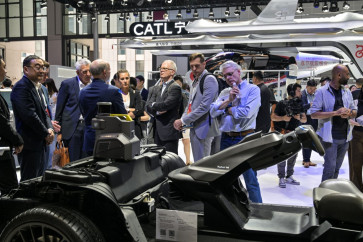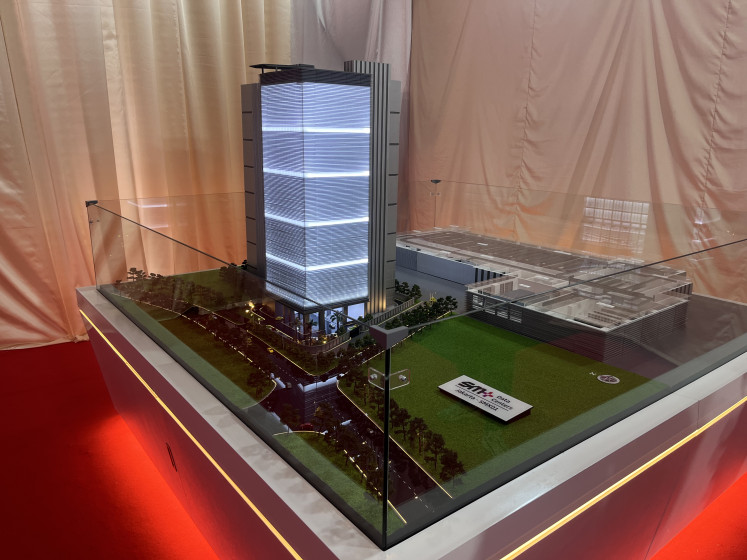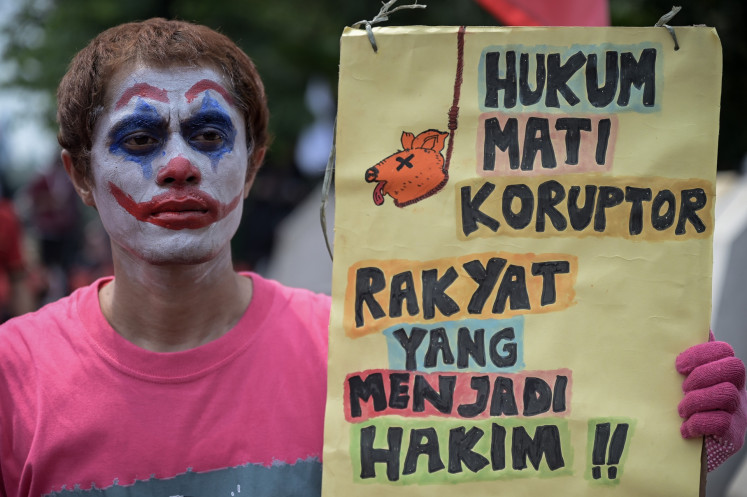Popular Reads
Top Results
Can't find what you're looking for?
View all search resultsPopular Reads
Top Results
Can't find what you're looking for?
View all search resultsIs one hour enough to save our earth?
On Saturday, March 31st, from 8:30 p
Change text size
Gift Premium Articles
to Anyone
O
n Saturday, March 31st, from 8:30 p.m. through 9:30 p.m., Indonesia joins in the rest of the world and goes dark to recognize Earth Hour. As we turn off our lights and enjoy an hour of quiet darkness, it’s equally important to remind ourselves what we need to do when we decide to turn our lights on again.
In the rush of our everyday lives, taking 60 minutes of our day without electricity does require a certain level of commitment, but in order to make a greater and sustained impact, it is imperative that we digest the lessons learned from Earth Hour and apply them beyond the hour.
This of course is not to dismiss Earth Hour merely as a symbolic event. In fact, I believe that it is a great initiative and an excellent stepping stone and opportunity to raise awareness about the need for energy efficiency worldwide.
I found it truly inspirational that so many people can collaborate together for a single event. It only started in 2008 as a worldwide event, and last year the number of participants shot up to over 1.3 billion.
The numbers are impressive for sure, but just how many of these people treat Earth Hour as more than just an hour-long fanfare? Somehow I think that due to the global phenomenon and hype, many people regard Earth Hour as a trend they can follow to appear hip and environmentally conscious.
During Earth Hour, Facebook and Twitter are swamped with photos and comments about all these “responsible” people contributing to this global phenomenon; and this lasts for a few days. Thereafter one wonders how many people continue to think about energy saving as a daily habit.
For these people, the likelihood is that, once the hour is up, they go about their normal habits instead changing small aspects of their lives to add to the bigger cause.
Do you really think by turning off your lights for one hour, you’re helping the earth?
This year marks the fourth year since WWF first launched the campaign to promote energy efficiency; as a result, people are now more aware of the concept of carbon footprints and the idea of renewable energy. While there is little doubt that our participation in Earth Hour is beneficial, I feel that it is simply not enough if we are to aim for lasting and meaningful change.
We need to collectively take necessary actions that we could easily integrate on a daily basis in order to lead a more energy efficient life. This includes everything from using public transport, using reusable grocery bags, conserving water and composting waste.
Another easy yet effective energy-saving management is to switch from using regular bulbs in our homes to an energy saving light such as light emitting diode (LED). There is an industry consensus that solid-state LED lights will play an increasingly important role in energy reduction programs.
In fact, LED lighting solutions can save up to 80 percent of energy consumption compared to the traditional lighting systems. Moreover, LED has a longer lifetime hence able to save operating costs in the long run.
According to studies, if new efficient lighting technologies were adopted globally, the world could achieve an energy saving of 40 percent. This is equivalent to 555 million tons of CO2 or 1.5 million barrels of oil a year. Electrical energy consumption in Indonesia is concentrated in cities in Java and Bali equaling to 78 percent of the total national electricity consumption.
As a long term resident of Jakarta, it comes to no surprise that it has the highest energy consumption. According to the electricity consumption data in 2008, households, offices and industrial buildings combined make up 93 percent of energy consumption focused in DKI Jakarta and Tangerang.
Though public facilities and government buildings only account for 7 percent collectively, I believe that government can create greater public awareness in promoting energy efficiency by applying sustainable light use in public spaces such as streets, bus stops and parks.
The benefit of using LED goes beyond energy efficiency and lighting functionality. Providing well lit public areas enables people to do activities till late night in safety, and with good public lighting crime rates are reduced. LED lighting can make landmarks more beautiful and astonishing, thereby also increasing a sense of pride for residents.
The Suramadu Bridge is a clear example of the benefits LED lighting can provide; it is now more beautiful; people are not afraid to be there at night because it is safe; and a world-class spectacle. It has instilled this sense of pride of the people.
So, is one hour enough to save the earth? Definitely not. It’s a good start, but one should not stop there. Why don’t we take it a step further? Remember to turn off the light when not required, be smart and choose energy saving equipment; reduce, reuse and recycle whenever you can. These simple actions can make a lasting positive impact.
The writer is president director of PT Philips Indonesia. The article is a personal opinion and does not represent the company










